I headed from Tōdai-ji to Kasuga Taisha.
As mentioned in my previous posts, I had already explored the vast grounds of Kōfuku-ji and Tōdai-ji temples that day, so I was starting to feel a bit tired… Even so, Kasuga Taisha Shrine is a must-see landmark in Nara. According to the information I gathered beforehand, the shrine’s red buildings and about 3,000 lanterns are particularly beautiful. Since I’m already in Nara, I couldn’t pass up the chance to visit.
When I arrived at Kasuga Taisha, there were many tourists, including large groups from overseas, but I was excited to see what kind of scenery awaited me!
Now, let me introduce you to Kasuga Taisha Shrine.
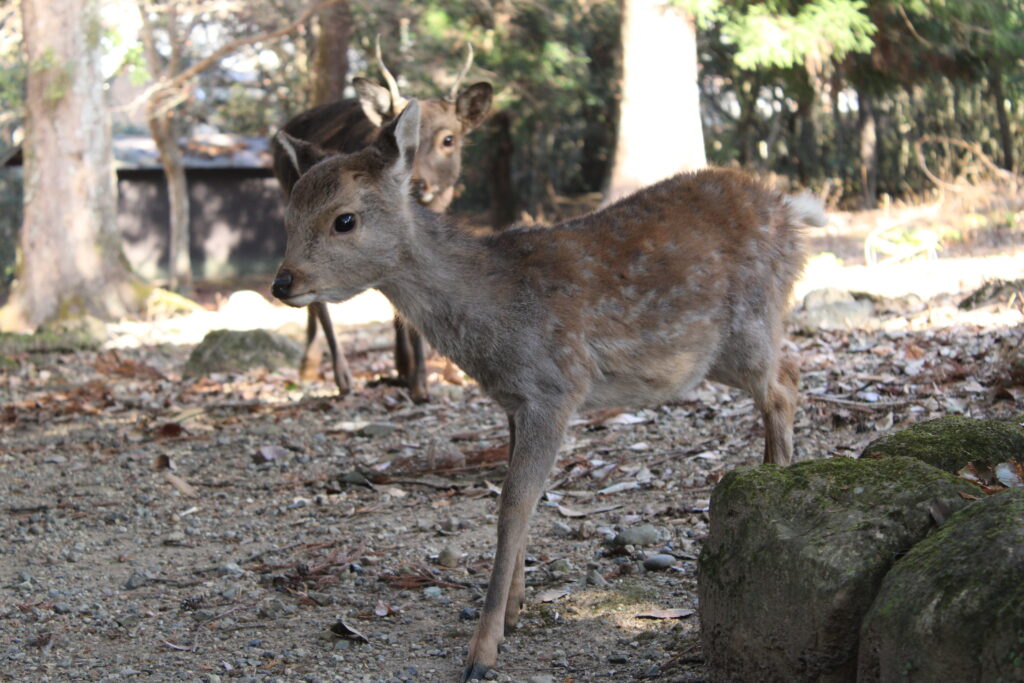
What is Kasuga Taisha?
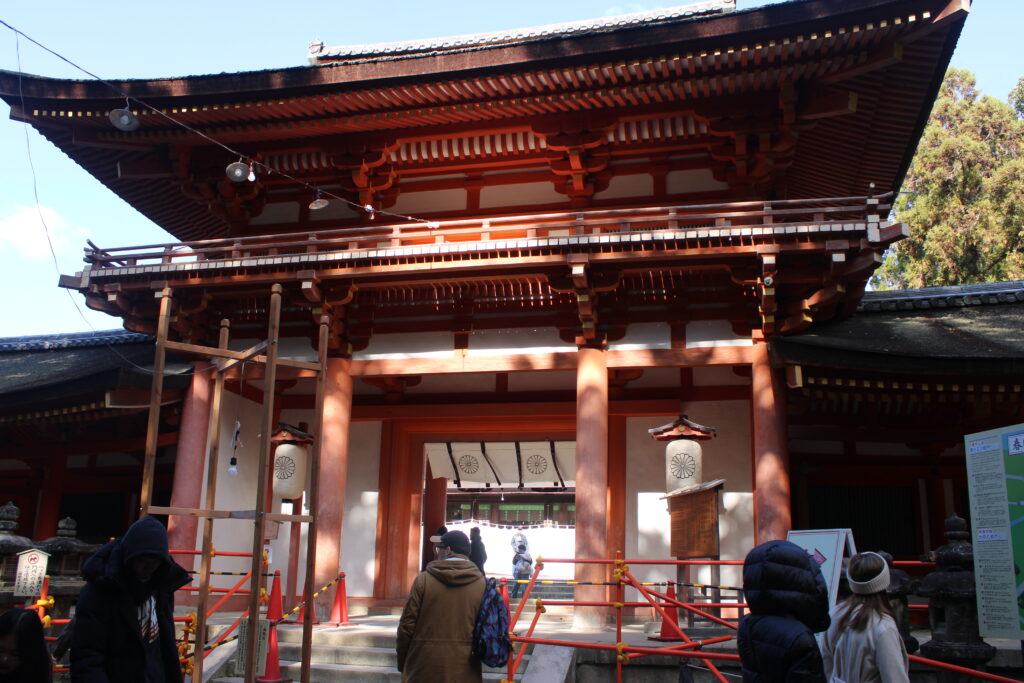
Kasuga Taisha Shrine is an ancient shrine located in the forest at the foot of Mount Kasuga, featuring elegant vermilion buildings and 61 subsidiary shrines within its grounds. It is also a UNESCO World Heritage site. The shrine’s origins trace back to the time of the Heijō-kyō capital establishment, when Takemikazuchi-no-mikoto, who arrived riding a white deer from the Kashima Shrine in Hitachi, was enshrined at the summit of Mount Kasuga. This is said to be the reason why deer are revered as messengers of the gods in Nara.
In 768, the shrine buildings were constructed at the present site, and over time, the deities Katori Shrine’s Futsunushi no Mikoto, and the deities of Hiraoka Shrine—Ame no Koyane no Mikoto and Himegami—were enshrined together. The shrine gained great reverence from both nobles and common people alike.
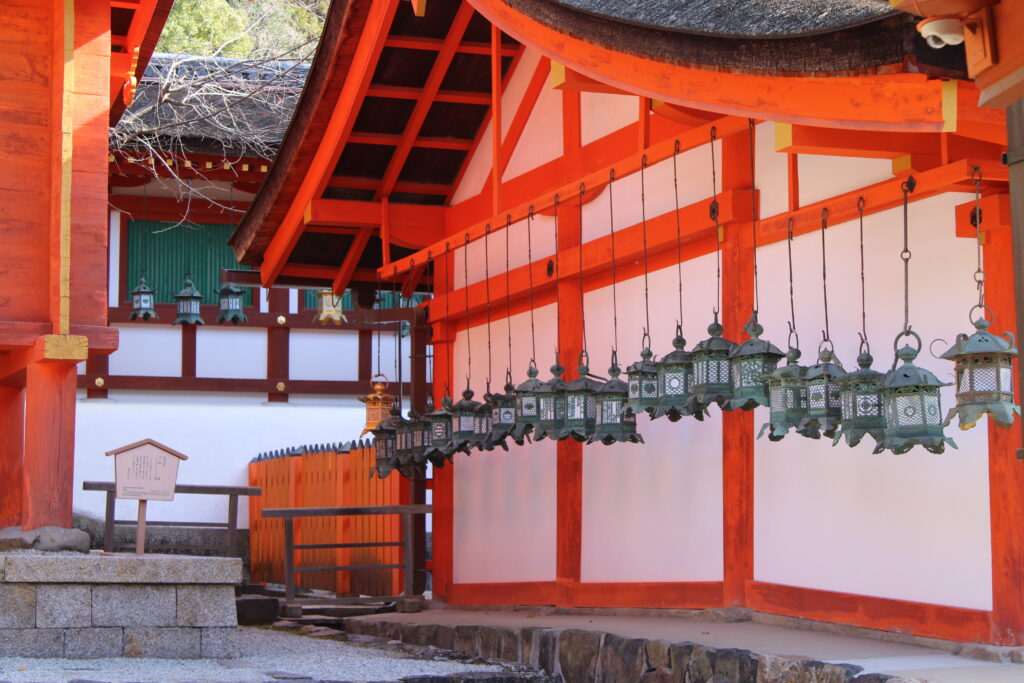
Exploring the Grounds
First, upon arriving at the grounds of Kasuga Taisha Shrine, you can spot a statue of a deer. As I mentioned earlier when explaining the origins of Kasuga Taisha, deer are highly revered as messengers of the gods here.
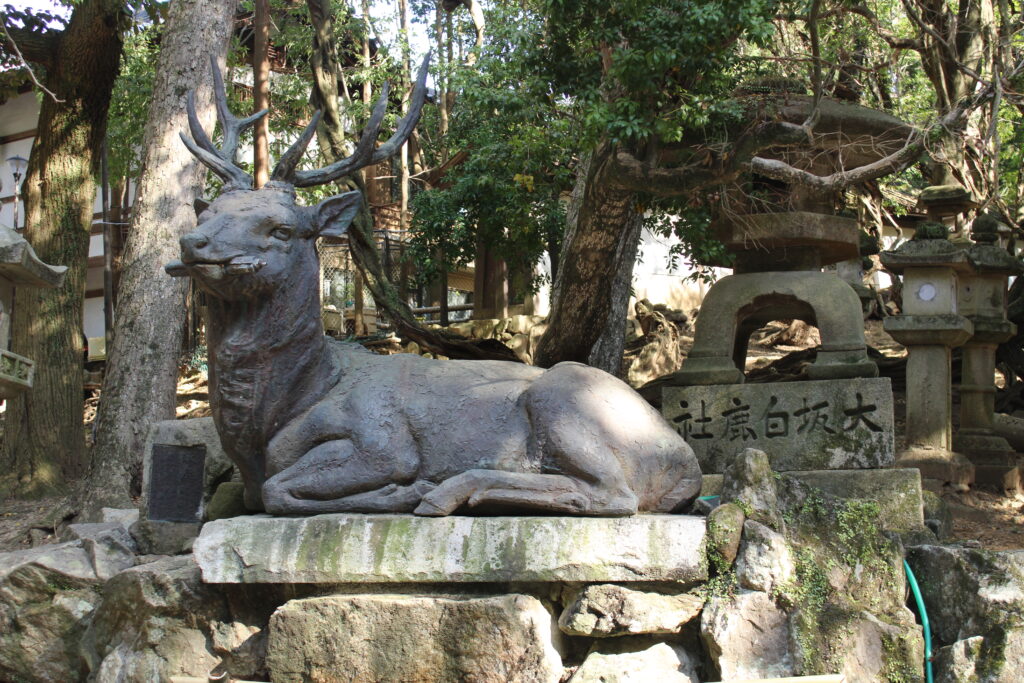
Next, let’s take a look at the Chūmon Gate and the corridors. The buildings, with their striking red color, are truly beautiful. In particular, the scene of the hanging lanterns lined up is incredibly captivating.
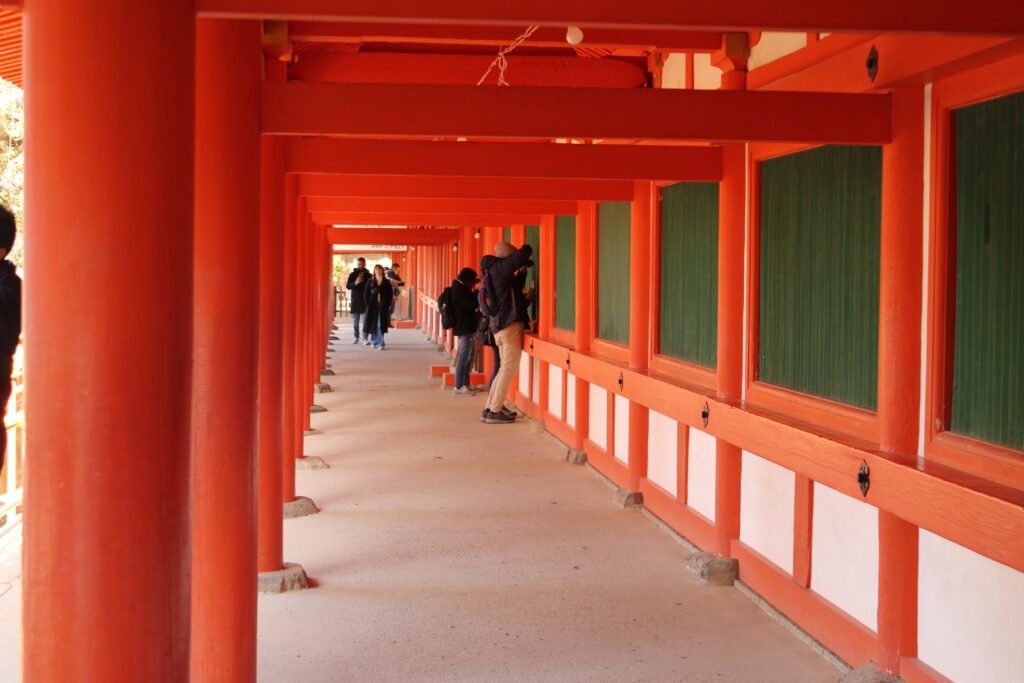
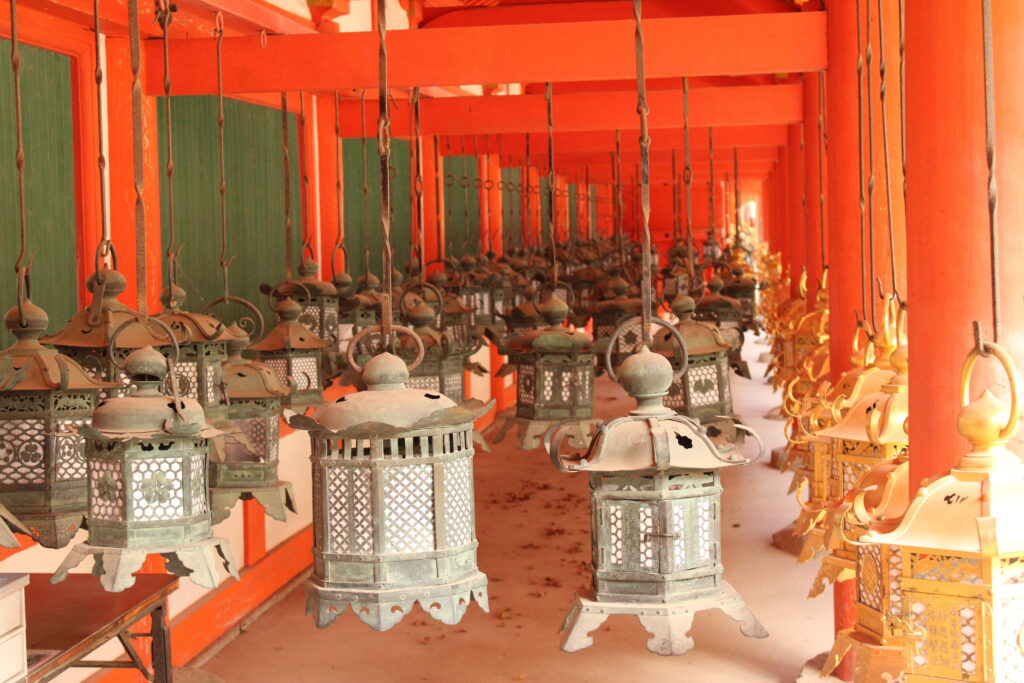
In addition, the entire grounds are beautifully maintained, making you want to take photos at every turn.
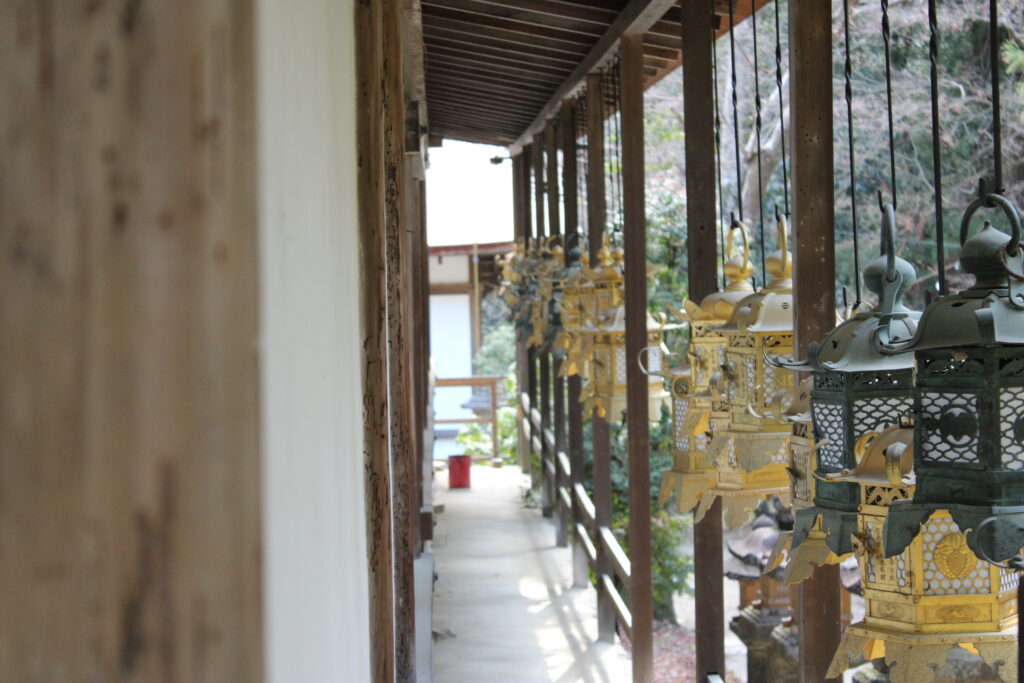
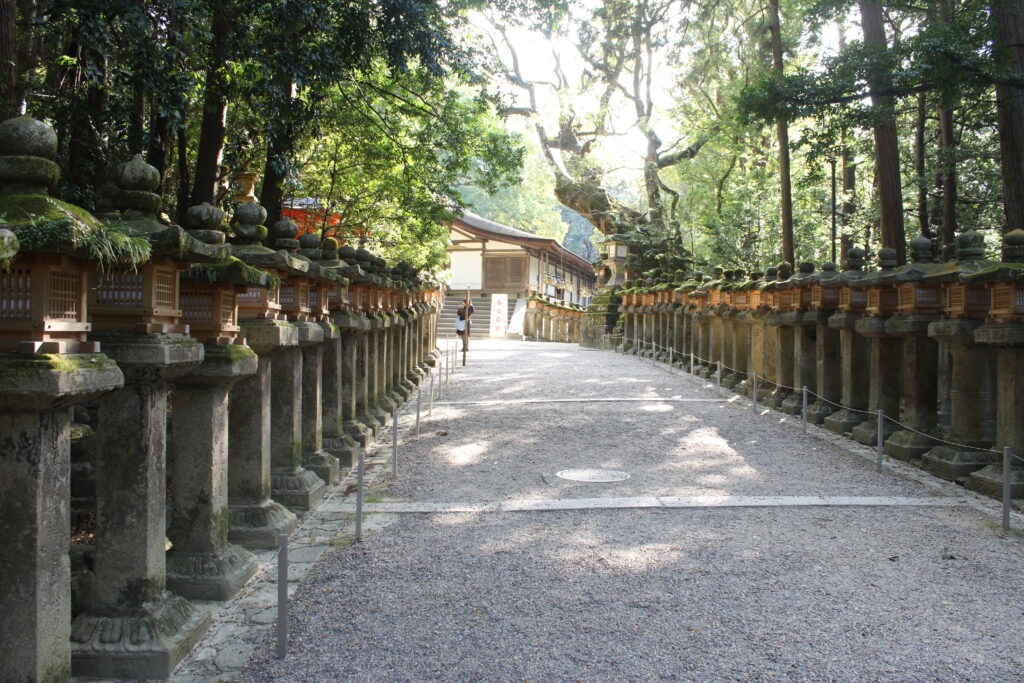
The photo below shows Wakamiya. It enshrines Ame no Oshikumone no Mikoto, the child of the main shrine deities Ame no Koyane no Mikoto and Himegami. He is worshipped as the god of wisdom.
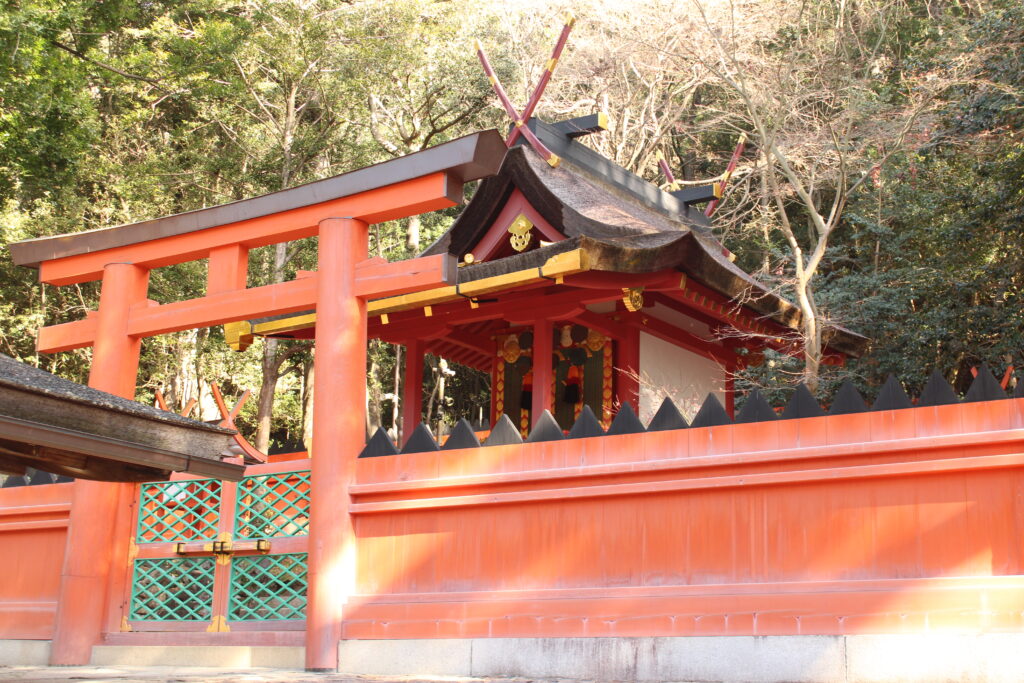
A monument to the poet Abe no Nakamaro stands on the shrine grounds. The inscription reads as follows:
“When I look up at the vast sky, the moon has risen. I wonder if this moon is the same one that rises over Mount Mikasa in Kasuga.”
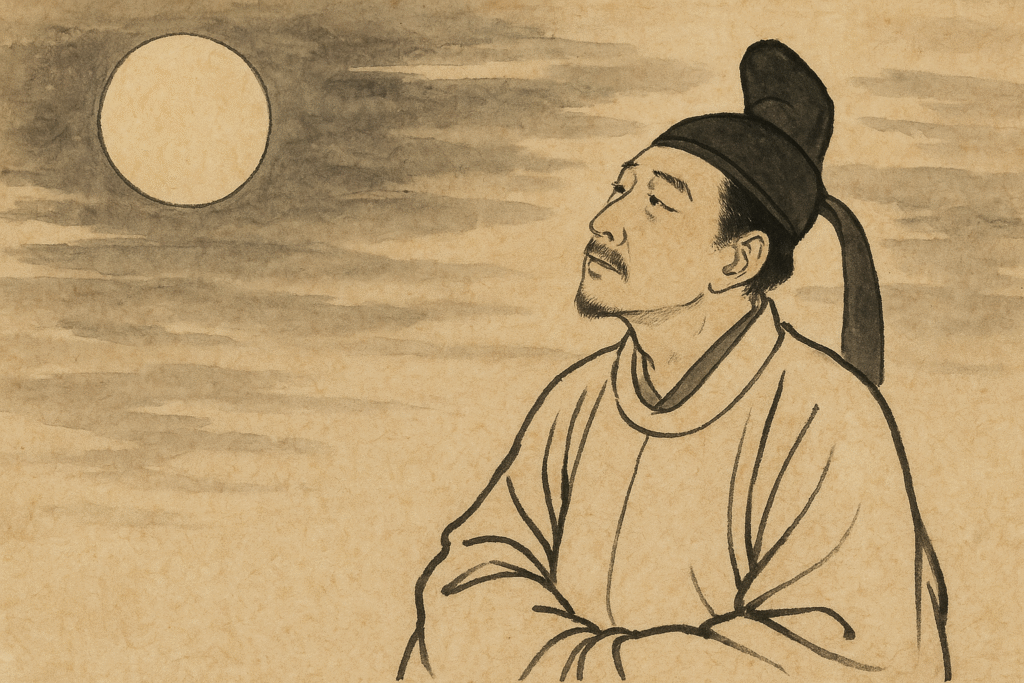
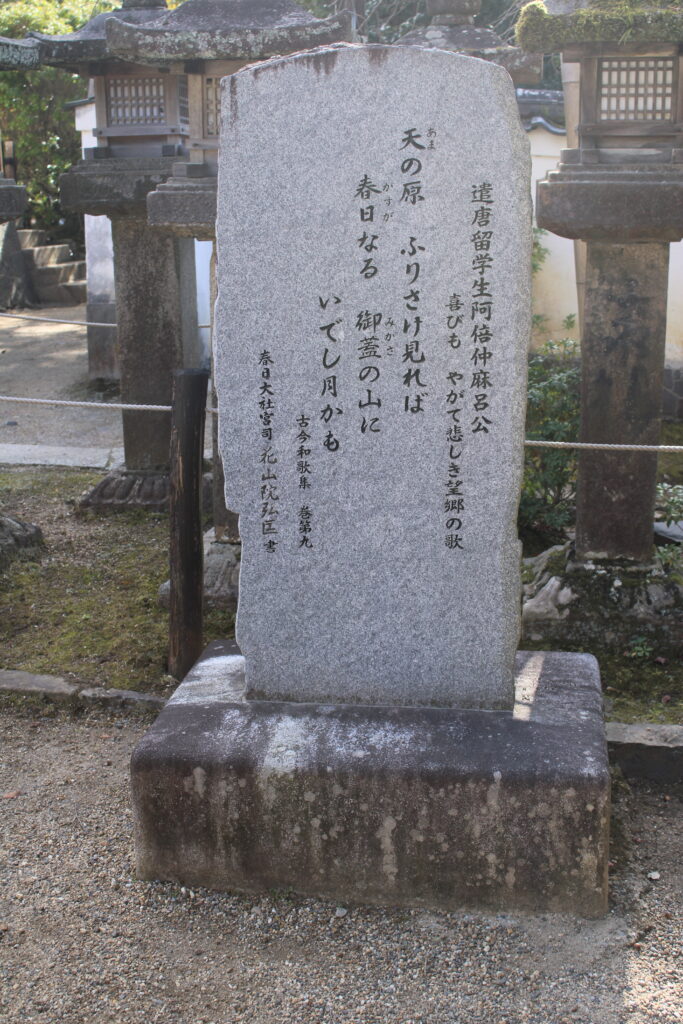
This poem is said to have been composed by Nakamaro, who had been sent to Tang China as part of the Japanese diplomatic mission, during a farewell banquet before his return to Japan. It’s easy to imagine that, given how difficult travel between Japan and China once was, he must have been overjoyed to be returning home.
Conclusion
Normally, I focus on exploring temples, so I don’t often have the chance to visit shrines, but I found that shrines have a unique beauty of their own. The scene of the hanging lanterns lined up in a row was particularly elegant.
Additionally, it was very meaningful to learn why the deer in Nara are so loved. I had been a bit overwhelmed by how many deer there were, but I suppose that’s just part of the experience…
By this point, I had been walking for a long time since early in the morning, and it was nearing noon. So, I decided to head to my next destination, the Shin-Yakushi-ji Temple. On the way there, I walked along a path called “Naka no Negi Michi.” It was surprising to suddenly find myself on a quiet, nature-filled path after leaving the bustling tourist spots, and I was struck by the contrast.
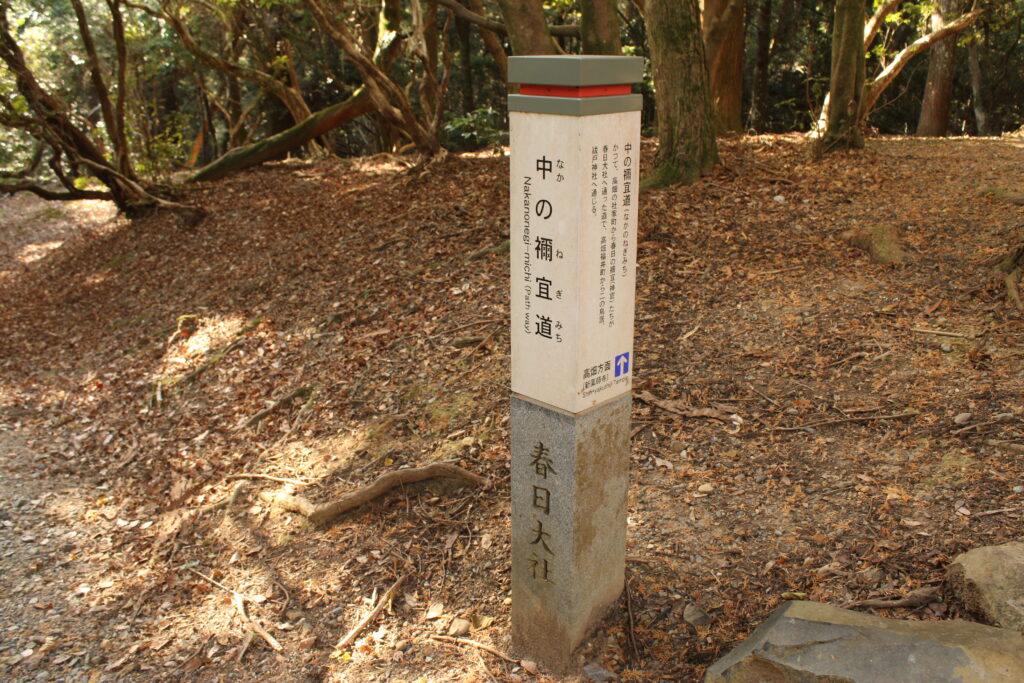
As you can see, it’s surrounded by nature, so it would be a little scary to walk alone here after sunset. I’m glad it was still daytime. Being away from the hustle and bustle of the tourist spots and spending a peaceful, quiet time were personally the best part of the day.
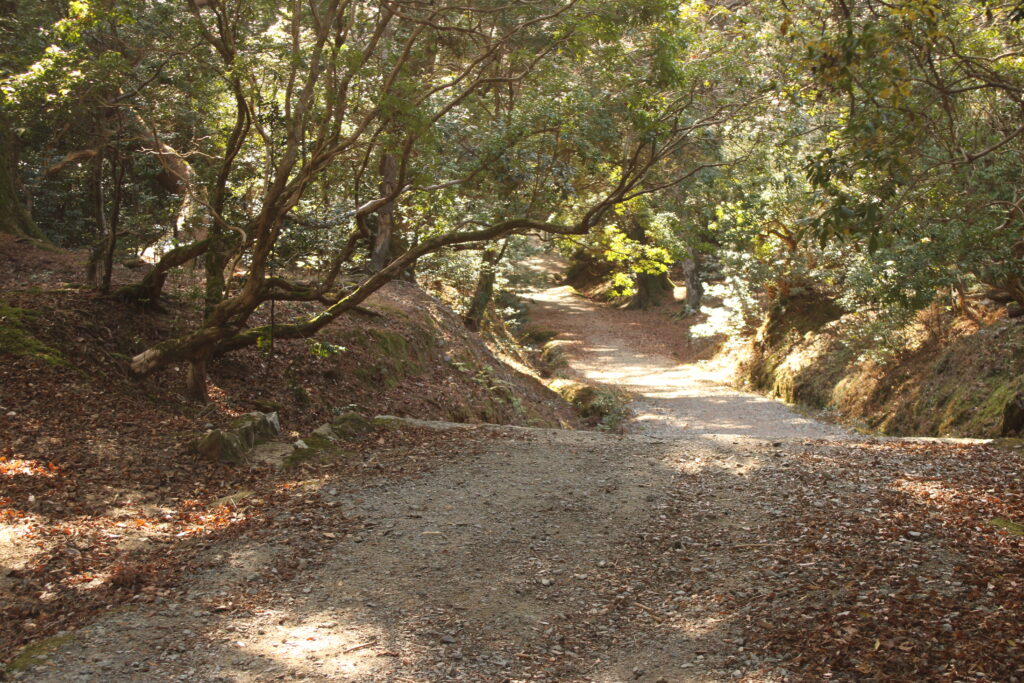
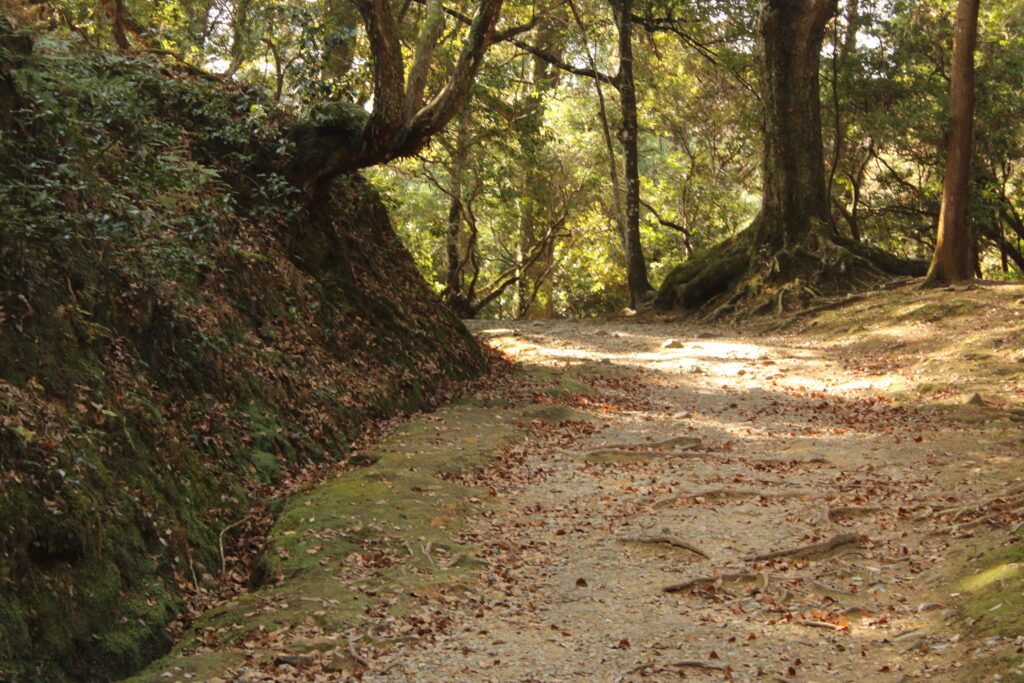
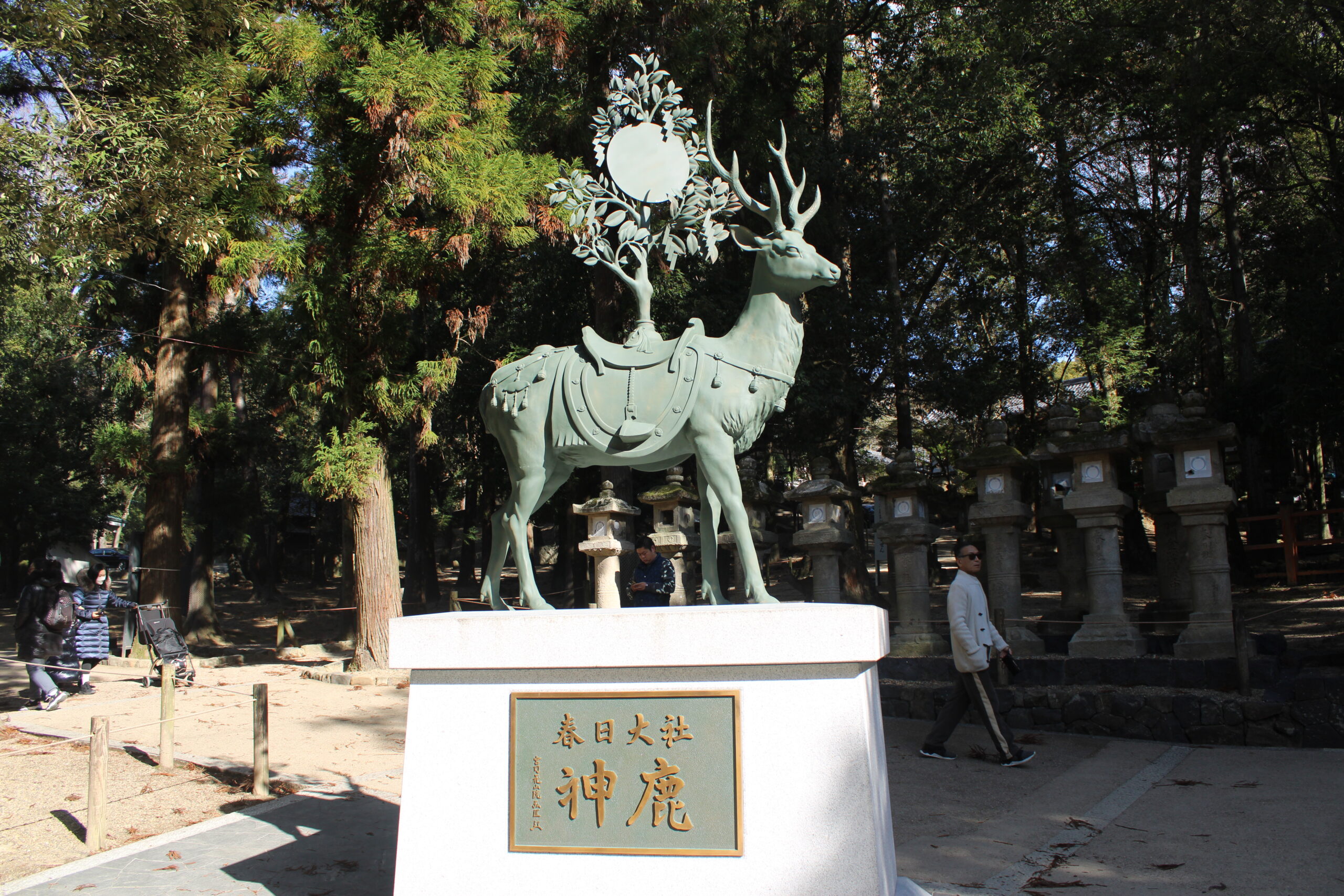


コメント